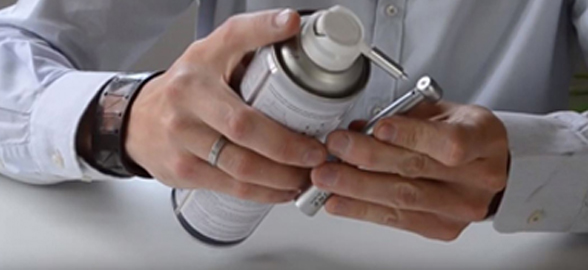Dental micromotors are used in dentistry for the treatment of semi-hard dental tissues due to their fast rotation and small size, as they are able to perform different actions, such as polishing or drilling on surfaces.
This instrument is connected to the hoses of the dental equipment with a variable connection system. Speed and torque are also variable. And, on the micromotor, two different types of instruments can be placed: handpiece and contra-angle.
And in this article we are going to help you to simplify your choice of dental micromotor among the wide variety of models, brands and connection systems. Take a look and see! Let's get started.
Characteristics of micromotors for clinics:
We have several models, both pneumatic and electric, of a very reduced size and ergonomic, ideal for your dental clinic. It is also very important that you take into account the power, so we have a wide range of micromotors, from the simplest to other more powerful models that can reach up to 40,000 rpm, so you get greater strength in dental processes.
Micromotors have a speed and direction regulator. They can also be pneumatic or electric, the most common being the pneumatic micromotor.
Electric micromotors are not connected directly to the mains, but via a transformer, as they require a continuous low-voltage power supply. It has the option of accelerating from 0 to 40000 rpm, so you can control the revolutions per minute either through the pedal they have incorporated or with the ring at the base of the micromotor. The great advantage of electric micromotors is that speed and torque can be easily controlled. Pneumatic models are also available.
Micromotors for contra-angle handpieces:
The shape of this model, is an angle with respect to the horizontal, this will favor the access to the mouth. The micromotor is attached to the handle, and at the other end the cutters are placed differently, depending on the need of each situation.
Micromotors for handpiece:
Here, the shape is straight and are used in surgeries that are performed on third molars and to retouch dental prostheses. The hoses are placed at the other end of the micromotor.
Electric Micromotor Connections
Unlike traditional air micromotors that connect to the same hose as the turbine, usually with the typical Midwest4 and multiflex coupling, electric micromotors require a special hose specific for each model and brand that connects to the control unit where the dentist can modify the parameters to his or her liking or treatment needs.
Before replacing equipment or looking for a replacement, it is important to look not only at the characteristics of the micromotor itself but also at the type of connection, assembly and additional equipment needed to avoid surprises once purchased.
Another of the fundamental elements to take into account when choosing our rotary instruments is the connection, as this will depend on our turbine being compatible with the dental chair we have. In the dental sector, we can find two types of connections: Midwest or Borden.
The Midwest system:
This connection system has four ways or holes, in which the water enters and exits our instrument.
Borden System:
In contrast, the Borden system has two ways or holes.
Due to the fact that this model has revolutionized the world of dentistry, at Dentaltix we have a wide catalogue of micromotors , which facilitate the work of the dental professional, minimize damage to the dental tissues of patients and save a lot of time in dental treatments, do you know which one best fits in your dental clinic?





